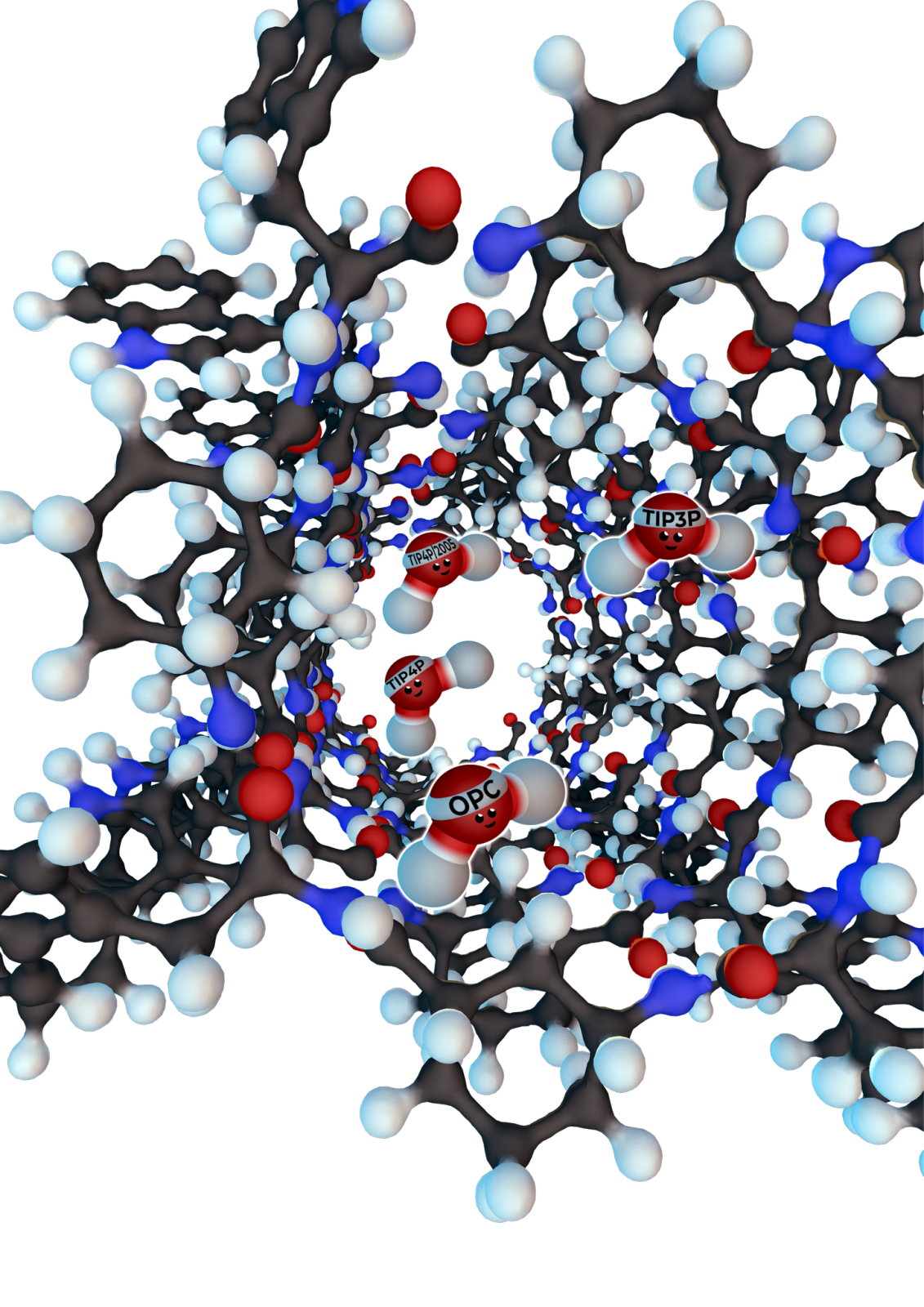-
A new study published in ACS Nano evaluates the behavior of cyclic peptide nanotubes to transport water across the cell membrane.
-
CiQUS researchers has compared different water models inside these nanotubes employing Molecular Dynamics techniques.
-
Results are key for the validation of new water simulation models in confined systems.

Reference
Martin Calvelo, Charlotte I. Lynch, Juan R. Granja, Mark S. P. Sansom and Rebeca Garcia-Fandiño. Effect of Water Models on Transmembrane Self-Assembled Cyclic Peptide NanotubesACS Nano 2021, 15, 4, 7053–7064
Self-assembled cyclic peptide nanotubes can be used as cell transmembrane channels and mimic the behavior and specific functions of the natural channels. In a recent study, CiQUS researchers evaluates the behavior of water molecules inside these nanotubes employing Molecular Dynamics (MD) techniques. The comparison of different water models can be used as a point of reference for wet-lab experiments and results key for the validation of new water models in confined systems.
Among other functions, the biological membrane that separates the interior of all cells from the outside environment regulates the exchange of substances. Certain channels located between the lipid layers that form the basis of the membranes are capable of transporting water, ions or other molecules across the cell. Disorders in membrane channels can lead to channelopathies as cystic fibrosis but can also act as DNA sequencers or sensors. Recent advances in nanotechnology allowed the design of numerous synthetic channels to replicate specific functions of these biological transport channels in terms of affinity, efficiency, stability and selectivity. In this regard, self-assembled cyclic peptide nanotubes are very interesting because of the hydrophobic inner cavity that can be used for the transport of molecules.
Using supercomputing to study the behavior of molecules
Molecular Dynamics employs computational methods to simulate the movement and interaction of atoms and molecules, allowing the spatiotemporal characterization and study of dynamic behavior of the systems. In addition, this technique is useful to study the properties of molecules confined at the nanoscale. Atomic resolution in Molecular Dynamics is a plus but reliability of the simulations depends on the accuracy of theoretical models selected, among other factors.
CiQUS research group led by Prof. Juan R. Granja and Dra. Rebeca García Fandiño employed Molecular Dynamics to analyze the behavior of cyclopeptides inserted into a lipid bilayer. The study, in collaboration with the group of Prof. Mark Sansom at University of Oxford and now published in ACS Nano, evaluates the behavior of four different water models inside these nanotubes finding water molecules interaction with the peptides present in the nanopores depend on the water model employed. All computations were carried out at the Galician Supercomputing Centre (CESGA). “None of these models was specifically designed for simulations of waters in nanotubes, and in the absence of wet-lab experimental structural and dynamic data, it is no possible to assess which of them more accurately models reality” explains Martín Calvelo, co-author of the study. This work opens new avenues for the validation of new and more accurate water models in confined systems


